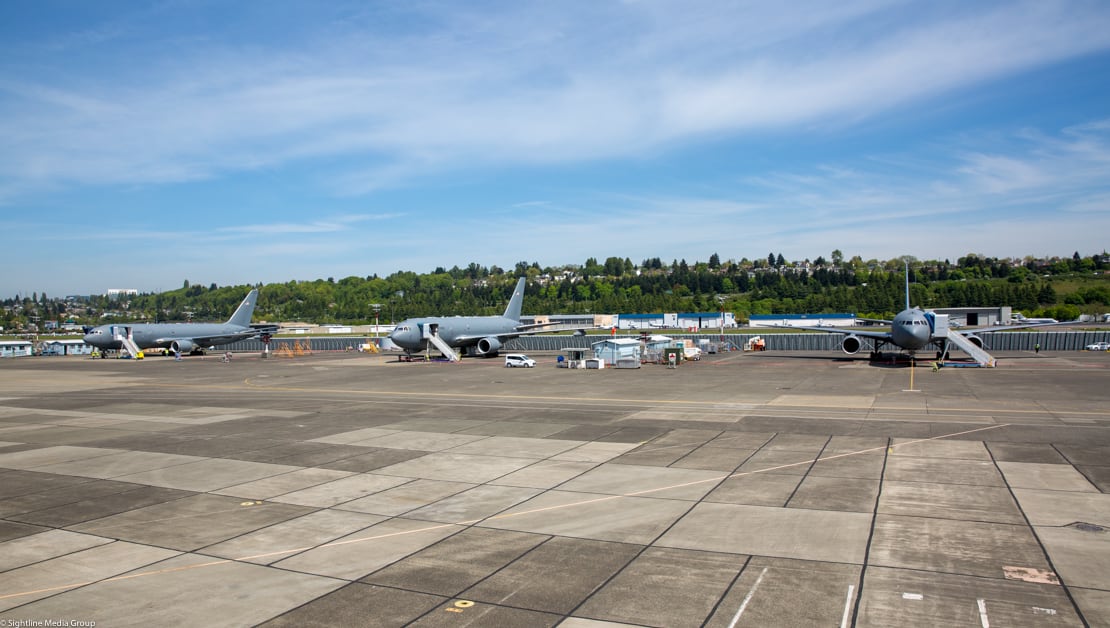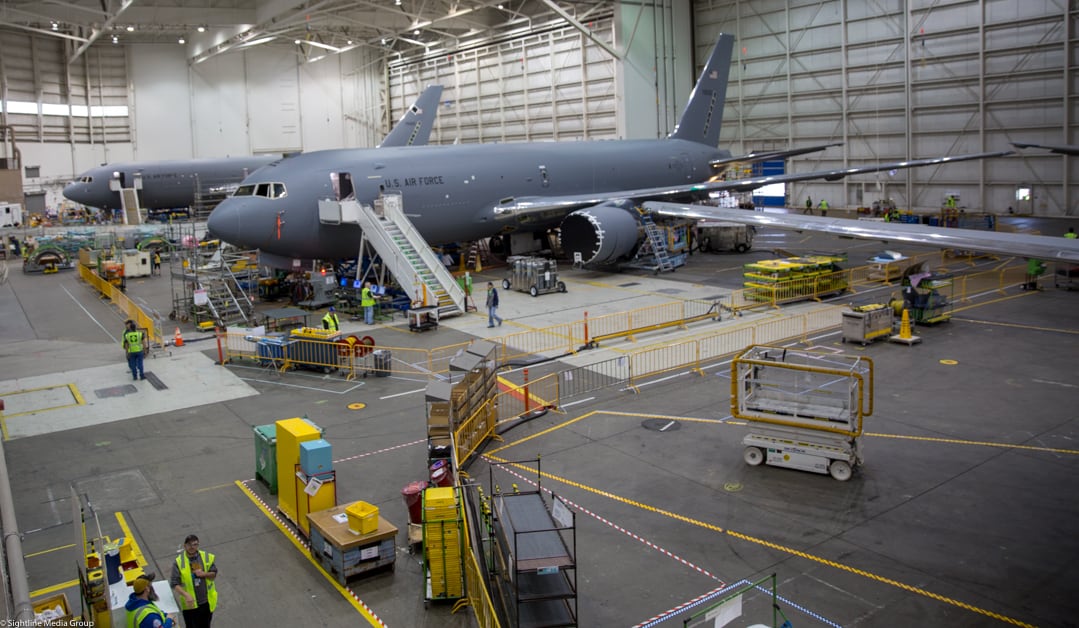WASHINGTON — The U.S. Air Force has added two new technical issues to the KC-46 tanker’s list of problems, potentially throwing a wrench into the projected delivery of the first tanker in October.
The service confirmed to Defense News on Sept. 17 that both deficiencies are category-1 , the most serious designation of technical problems, and revolve around the tanker’s refueling boom system.
At this point, the Air Force is unsure whether the two problems will be solved in time for KC-46 manufacturer Boeing to deliver the first tanker next month, said Air Force spokeswoman Ann Stefanek.
“Boeing and the program office are still reviewing the test data and assessing the risk and potential solutions to these deficiencies, and proceeding in parallel to aircraft delivery,” she said in a statement.
RELATED

The first new deficiency, which the service has labeled “No Indication of Inadvertent Boom Loads,” refers to situations where boom operators unintentionally provide an input into the flight control stick that induces loads on the boom while it is in contact with a receiver aircraft. The KC-46 currently has no way to notify that operator that this is happening.
The second deficiency was found when pilots of receiver aircraft reported that the boom is too stiff during the part of the process when the receiver plane moves forward into the fuel transfer zone.
“We discovered these deficiencies during the course of flight testing,” Stefanek said. “As the program progresses through receiver certification testing, we are still in discovery phase with the tanker/receiver pairs. … The test team is still writing the test reports, but submitted the DRs [deficiency reports] in advance to assist in accelerating root cause, corrective action development.”
In a statement, Boeing said that it continues to work with the Air Force to determine a path forward.
“These are not safety of flight issues and we are confident in the unmatched capabilities of the KC-46 tanker aircraft," the company said. "To date we have completed more than 4,000 contacts during flights with F-16, F/A-18, AV-8B, C-17, KC-10 and A-10 aircraft. The refueling system has been tested extensively — we have a well-tested system that works.”
The Air Force can accept tankers at its own discretion, with or without active deficiencies. However, both Boeing and the Air Force have worked under the assumption that the service will not do so until all category-1 issues have been worked out or downgraded to category-2, which signifies that a workaround has been put into place.
The news of two more deficiencies is a blow to Boeing, which had been hoping to deliver the first tanker in October after finally coming to an agreement with the Air Force earlier this year on a proposed schedule. The KC-46 program has been notoriously above cost, and Boeing’s fixed-price contract with the Air Force has forced it to pay out more than $3.4 billion to cover those overruns.
It has also run years behind schedule: The company was initially slated to deliver the first 18 certified tankers by August 2017. Boeing now has until October 2018 to meet that deadline — called required assets available— but will almost surely miss it, as the Air Force does not have the resources to absorb 18 new tankers in a month.
RELATED

Over the past year, Boeing has been racing to resolve three additional category-1 deficiencies. Two involve the tanker’s remote vision system, or RVS, a series of cameras and sensors that allow the boom operator to direct fuel into a receiver aircraft.
Unlike legacy tanker operators, KC-46 boomers will be unable to look out a window in order to see the refueling process happen — making them entirely reliant on the RVS. However, certain lighting conditions make it difficult to see the receiver aircraft’s receptacle, leading to incidents where the boom has scraped the plane being refueled.
To fix the issue, Boeing has developed and tested a fix to the RVS’ software. The Air Force is currently reviewing that data, and both RVS-related deficiencies are still in effect.
The final issue involves the system centerline drogue system, which has a mechanical lock that sometimes inadvertently disconnects during a refueling. Boeing plans to create a software fix to ameliorate that problem, too, but it remains a category-1 deficiency.
Valerie Insinna is Defense News' air warfare reporter. She previously worked the Navy/congressional beats for Defense Daily, which followed almost three years as a staff writer for National Defense Magazine. Prior to that, she worked as an editorial assistant for the Tokyo Shimbun’s Washington bureau.








